About the SPOT Simulator
The ESCAP SPOT Simulator estimates the impact of introducing social protection scheme on poverty, inequality and consumption. The impact can be estimated for rural and urban households, as well as for different income groups and family configurations. It also computes the cost of simulated programmes, providing different illustrative options to expand fiscal space for social protection.
Users can design social protection schemes in a country by setting parameters related to eligibility criteria, coverage levels and benefit amounts. The Simulator allows the user to analyze one scheme at a time or to combine different schemes and build a customized social protection package.
In addition to simulating the impact in one country, users can compare social protection schemes of their choice within and across different countries.
Features child, disability, old age, and maternity benefits
Includes 29 countries across Asia-Pacific
Builds on Household Income and Expenditure Surveys
Did you know that social
protection
can significantly reduce poverty and inequality?
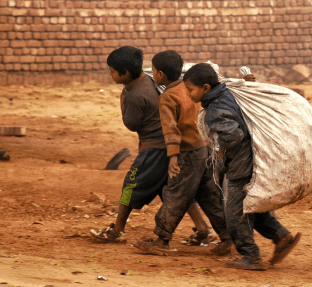
Poverty
A universal child benefit scheme set at the global average benefit level could reduce poverty among recipients by 11% in Armenia to 100% in Maldives and Türkiye as measured by the international poverty line ($1.9).

Inequality
A combination of universal child benefit, disability benefit and old-age benefit set at the global average benefit level could reduce inequality as measured by the Palma ratio from 5% in Cambodia to 29% in Georgia.
Consumption
Reductions in poverty and inequality operate through an increase in consumption. The poorest 10% in the whole population can experience an increase in their household consumption from 8% in Kiribati to 53% in the Philippines.

Cost
These large and positive impacts are affordable. In 2023, the cost of a combination of universal social protection schemes would range between 2% of GDP in Bangladesh to 4% in Georgia.

Note: The results are obtained from the ESCAP SPOT Simulator in June 2022.
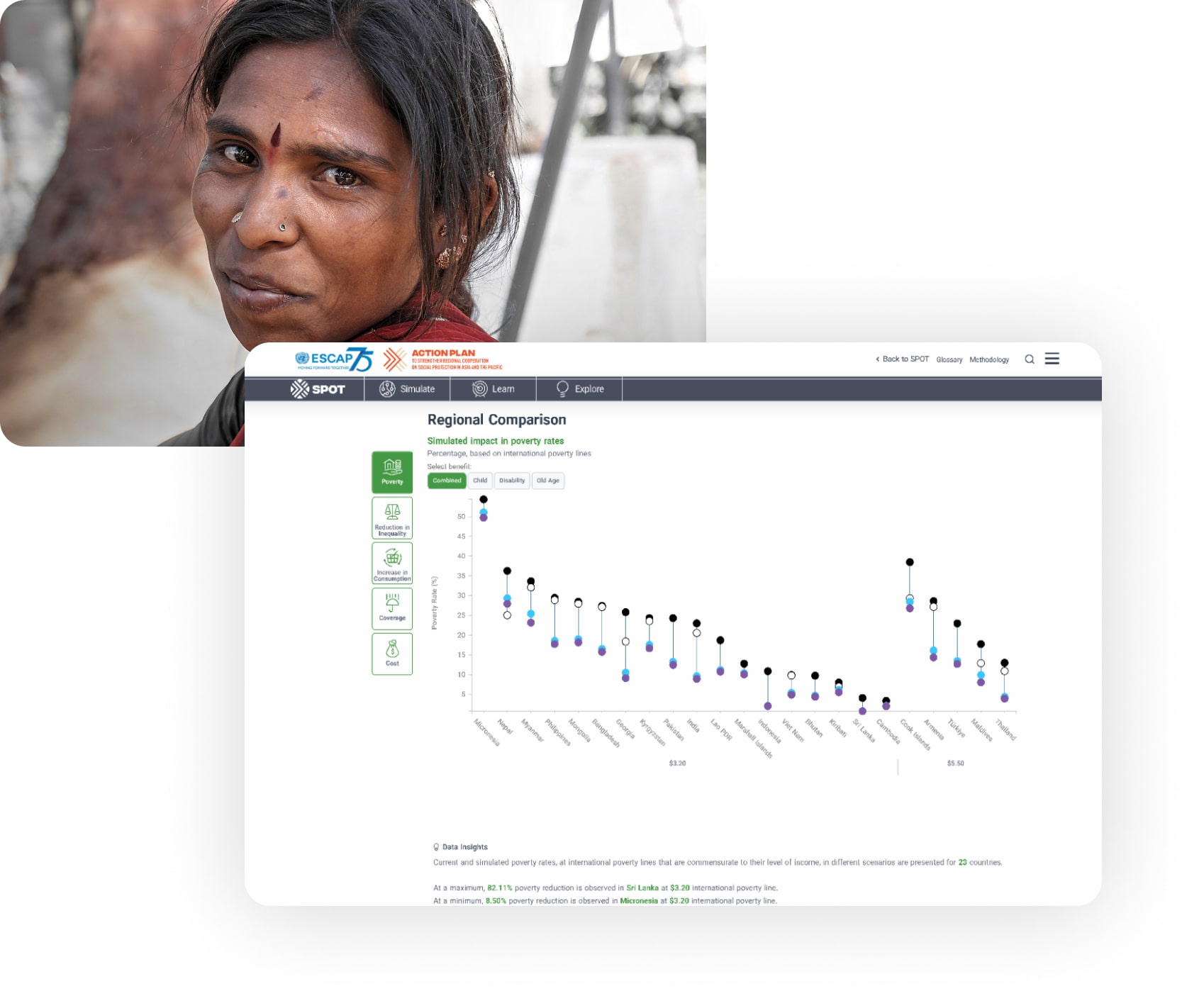
Would you like to compare the impact of universal social protection across the Asia Pacific region?
Explore the dashboard to see the impact of a comprehensive and universal social protection package with benefit levels at global or OECD averages.

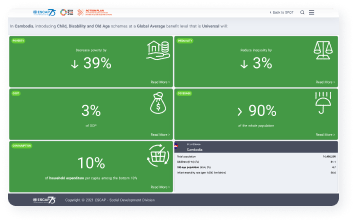
Would you like to explore the impact of universal social protection in your selected country?
Enter the dashboard for an overview of how a comprehensive and universal social protection package could improve lives.
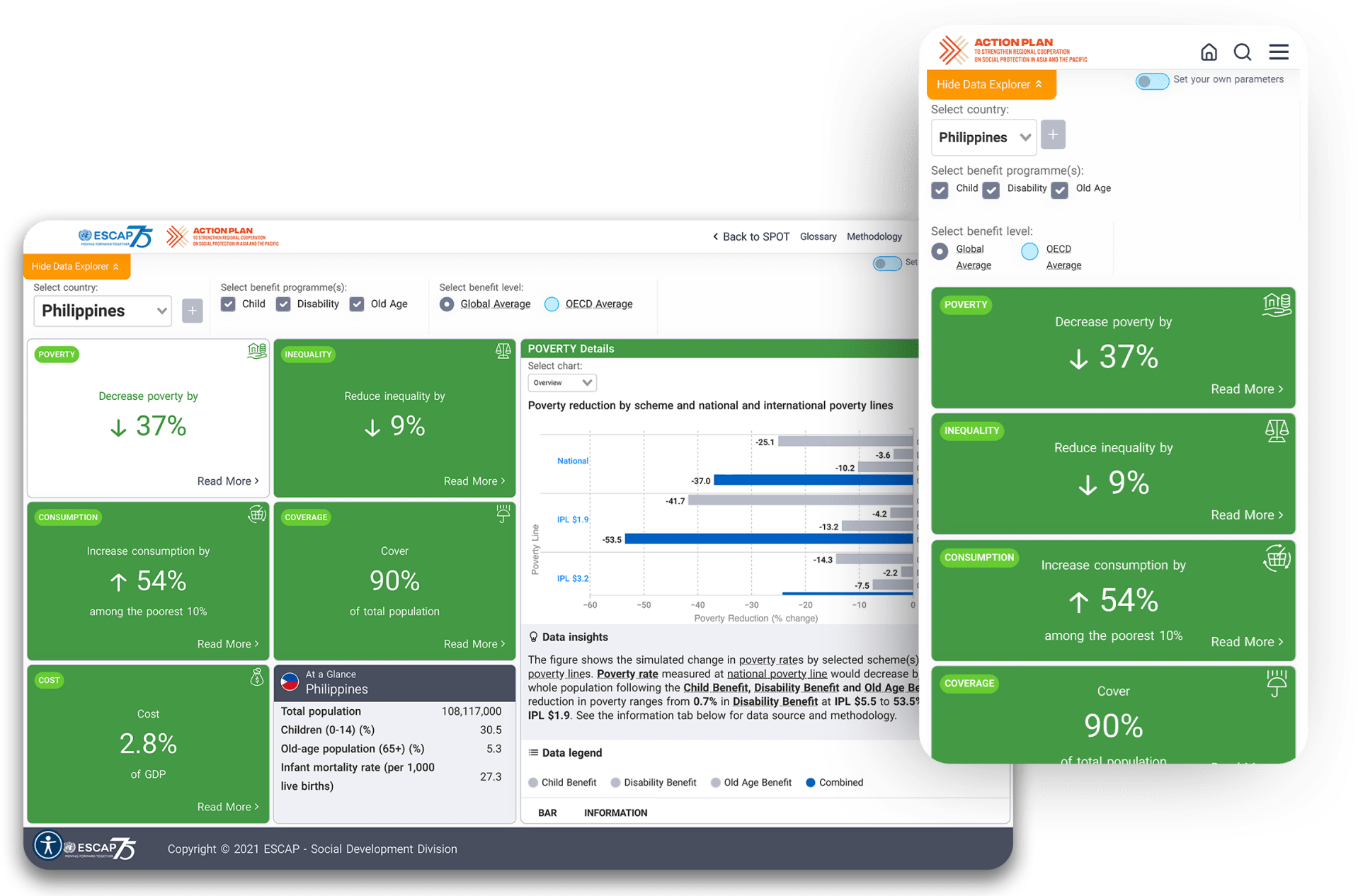
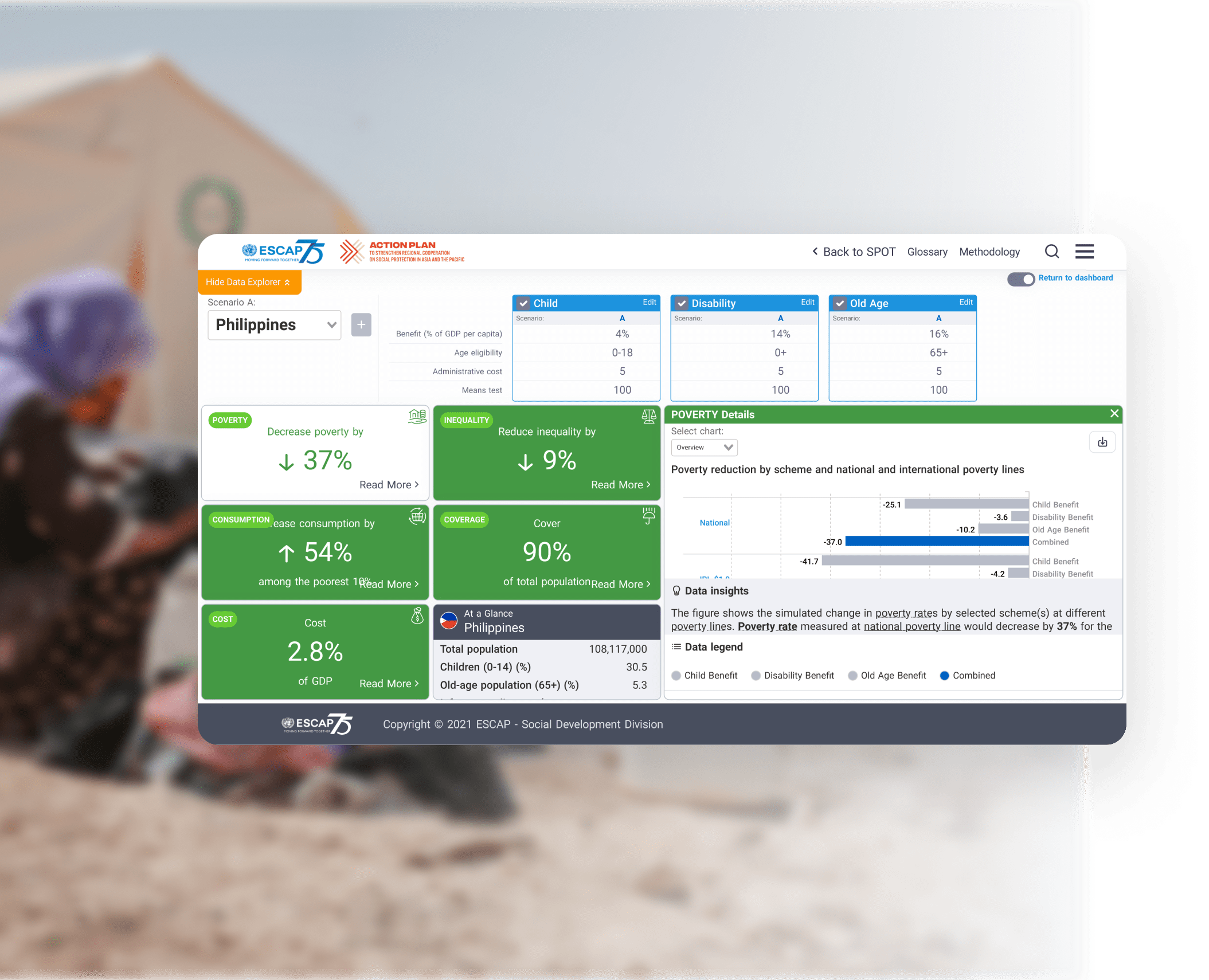
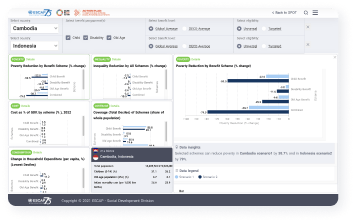
Would you like to build a custom-made social protection package and explore its impact in your selected country?
Enter the simulator to build your customized package and explore an overview of how a comprehensive and universal social protection package could improve lives.
 The Social Protection Online Toolbox (SPOT) Simulator enables policymakers to quickly see how the design of schemes impact poverty, consumption, inequality and the costs.
The Social Protection Online Toolbox (SPOT) Simulator enables policymakers to quickly see how the design of schemes impact poverty, consumption, inequality and the costs.



 SPOT empowers policymakers with evidence and tools to better understand the impact of social protection. It is a useful platform for countries to implement the Action Plan on Social Protection.
SPOT empowers policymakers with evidence and tools to better understand the impact of social protection. It is a useful platform for countries to implement the Action Plan on Social Protection.



 The SPOT Simulator demonstrates that social protection is an investment in the economy and jobs by increasing consumption since most jobs in many countries in the region heavily depend on domestic final demands.
The SPOT Simulator demonstrates that social protection is an investment in the economy and jobs by increasing consumption since most jobs in many countries in the region heavily depend on domestic final demands.



Additional Links
Methodology: See the methodology used in the Simulator as well as data sources.
Glossary: See the terminology used in the Simulator.
Note: The simulation is a policy tool for guiding reforms in social protection programmes and therefore does not provide precise estimates of impact, cost and affordability.
Suggested Citation: United Nations, Economic and Social Commission for Asia and the Pacific (ESCAP), SPOT Simulator. Available at https://spot.unescap.org/simulator (accessed on DD Month YYYY ).
